To put everything I’m about to say into context, I don’t know if anyone has anticipated Hammerwatch 2 as much as I have.
The original Hammerwatch, released in 2013 by Crackshell, was the co-op indie game I played for months. It was a Gauntlet-style dungeon crawler with distinct character classes, lite RPG elements, and neat mod support. It’s a short game that you can clear in under four hours, but I got so much replay value out of it in part thanks to Crackshell’s ongoing support. Heck, it got an entirely new campaign, Temple of the Sun, as free DLC. Steam says I put over 40 hours into this one.
Meanwhile, 2018’s Heroes of Hammerwatch remixed the original game’s assets into a Roguelite structure. Man did I put hours into this one. Heroes took that arcadey co-op fun from the original and gave it enough progression elements to make it really hard to put down. It offered so much to upgrade that it was easy to want one more run before falling asleep at 3:00am. This too had great post-launch support; I even double-dipped on the Switch version just so I could play it with more people.
This all leads us to Hammerwatch 2, which on paper looks to be the series’ greatest evolution yet. Not only do we have much prettier pixel art, but we have an open-world RPG filled with quests, optional dungeons, loot to find and craft, and a real storyline to follow. After having such fun experiences with the previous two games, I had no idea how something that looks this good could go wrong.
Unfortunately, it did. It absolutely, indubitably did.
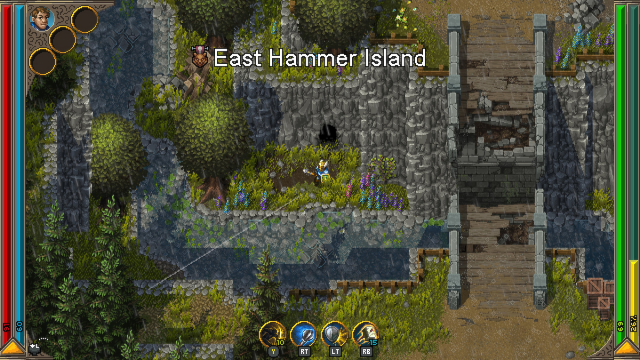
It’s a dragon attack
For full disclosure, I couldn’t finish Hammerwatch 2 in time for a full review. I put in nearly 20 hours, though that was between two characters for reasons I’ll discuss later. Take that as you will.
Hammerwatch 2 begins roughly 8 seconds after the good ending of the original Hammerwatch. Seeking to escape the first game’s castle, you’re taken through a basic tutorial that teaches you several basics that should come as second nature for Hammerwatch players. Afterward, you land in the game’s first overworld area, where you’ll need to figure out how to advance the story.
Hammerwatch 2 doesn’t exactly have a gripping narrative, but I do like how it contextualizes the original game. It reminds me of how Dragon Quest II made the original game’s map a small piece of its world just to offer some scale.
Assuming you follow the most obvious path forward, you’ll find yourself in a town full of NPCs with items to sell, quests to give, and dialogue to read. At this point in my adventure, I was having a grand ol’ time. I took every quest, helped a guy clear his cellar, and set off for more adventure. This is where the trouble started to begin.
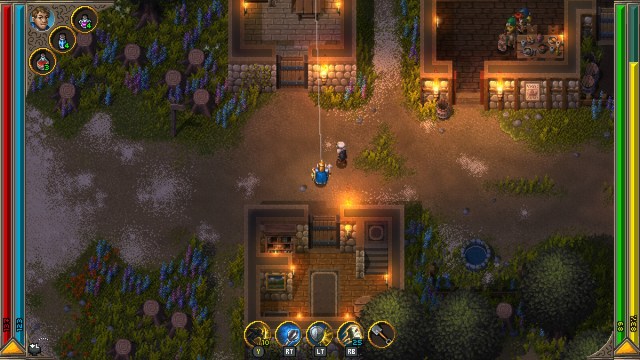
I am afraid of the dark
The first, most obvious mechanic Hammerwatch 2 introduces is its Day/Night system. I really wish it didn’t.
Like an MMORPG, Hammerwatch 2 abides by an in-game clock that all NPCs adhere to. Most shopkeepers and important NPCs aren’t available at night, which is a complete and utter pain. Nearly every time I returned from dungeon crawling and just wanted to sell my excess loot, I’d have to buy an inn room to pass the time since no one was awake. Yes, you can’t just open a menu and rest out in the open like in The Elder Scrolls. You have to wait for the clock or pay gold just to make things open back up. Gold, by the way, isn’t exactly in excess in the early game, so this really bites.
Additionally, the game keeps track of how many days have passed during your adventure. Remember how I said I gleefully took all those side quests once I saw them in town? Well, take too long to fulfill them, and you’ll outright, permanently fail some of them. The game doesn’t tell you which quests have a time limit, nor does it tell you how long you have until you reach a fail state. One quest involved collecting materials for someone to make a filter in a sewer, and only after I returned to him with everything he needed did I learn that I apparently took too long. No rewards, just a bunch of garbage in my inventory I now have no use for.
I really, genuinely saw no purpose to the game having any time system at all. It literally only seemed to add inconveniences with no innovations or features to counterbalance them. And we’re just getting started here.
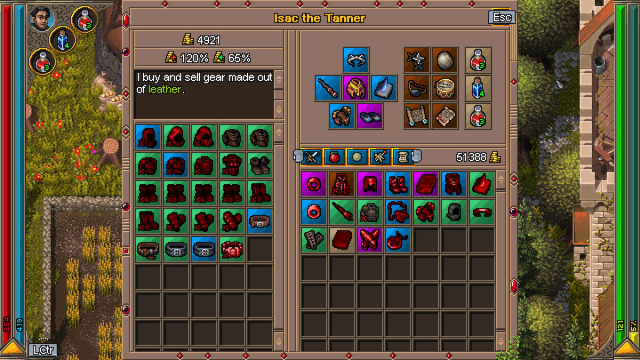
Realistic shopping simulator
In the first town, the shopkeeper says that he can buy and sell anything, but his rates are quite bad. I didn’t think I’d miss this NPC as I progressed, but I’d gladly take bad rates for his sweet convenience.
Hammerwatch 2 likes to use multiple shopkeepers to make your basic gear maintenance way more cumbersome than necessary. Need to sell a pair of gloves in the main city of the game’s next central area? Better go to the vendor who deals specifically in leather. However, don’t get that person confused with the vendor next to them who only buys and sells offhand equipment of two specific rarity tiers. These aren’t distinguished on your map either, so you better memorize what every specific shop does or have a pen and paper with you to take notes.
I can kind of sort of see what the developers were going for here. For example, every vendor’s limitations become a weird way you can optimize your gold if you know where everything is. But it’s so, so ridiculously cumbersome and adds so much minutia to Hammerwatch 2. I can understand that maybe there’s a market for games that deliberately neglect roughly two decades of quality-of-life features in gaming, but did anyone who enjoyed the previous Hammerwatch games want that? I hope for Crackshell’s sake that I’m the outlier here.
All I do know is that for all the RPG systems tacked onto Hammerwatch 2, I would really rather spend my time crawling dungeons than doing tedious, laborious management. And I wish I could say that the game knocks that classic hack and slash gameplay out of the park.
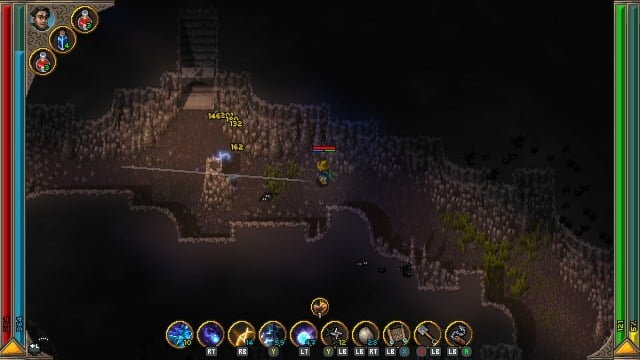
Controller needs support badly
Both previous Hammerwatch games were, overall, pretty controller-friendly titles. Characters like the Ranger played great with two analog sticks, so that was my expectation going into Hammerwatch 2. Unfortunately, I legitimately don’t know if anyone ever thought about how this game would play on a controller.
Right off the bat, Hammerwatch 2 does not accommodate fitting essential inputs on a gamepad. Heck, your three quick item slots aren’t even mapped by default. Instead, the game expects you to use a radial menu that appears by clicking the L3 button and selecting items that way. The problem is, this thing is ridiculously finicky. There is not a single chance that anyone in the heat of combat would be able to bring this up, select the item they need, and use it before they just die instead. It well and truly might as well not be there.
Then we get to the skills. Hammerwatch 2 lets you map so many skills to your hotbar that you might think you’re playing an MMORPG. Except, as you may have noticed, controllers don’t typically support layouts like this unless you’re Final Fantasy XIV. While you can map skills to button combinations (For example, left bumper plus a face button), I found many combinations were downright unreliable in the heat of combat. Exacerbating this issue is how overworld items, like a shovel or a hookshot, also need to be mapped like skills.
On top of this, just navigating menus is nearly a non-starter on controller. Using the Dpad to select things in your main menu like in a normal video game was barely even functional. So instead, I clumsily handled everything with a virtual mouse cursor you can control with the right stick. Even this feels unfinished, especially when you need to use your right stick to scroll through text which winds up sending your cursor flying across the screen.
For a game that will release on all major consoles, the controller support here is straight-up unacceptable. In no way does this reflect something ready for launch.
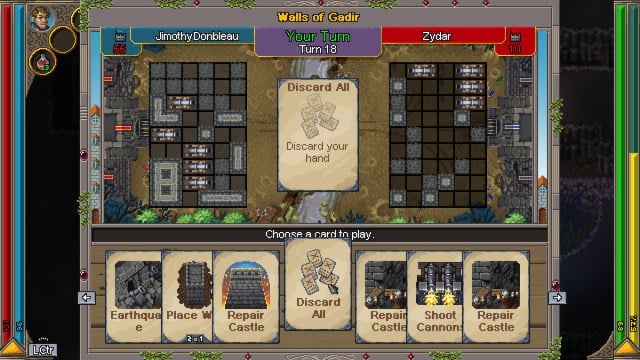
I’ll play cards all day though
I will say that Hammerwatch 2’s additions aren’t all bad. An unexpected winner for me was the inclusion of a new card game called Walls of Gadir. Basically, it involves both players placing walls around a playing field to protect a fortress while building cannons to attack your opponent’s weak spots. It’s a great mix of simplicity and strategy that makes it the perfect diversion from dungeon crawling. Earning some extra gold in the process is a bonus.
Additionally, you can use some neat equipment once you make sense of the obtuse menus and crafting system. For example, I crafted a piece of gear that summoned undead minions whenever I got hit, which genuinely felt impactful. And as mentioned above, the pieces of gear that give you new skills for your hotbar are… well, they’re nice on paper. It’s a shame that the loot system mostly seems to exist so you have to shuffle your gear around to have the right elemental resistance you need for a specific dungeon, which downplays the excitement you might feel from naturally finding equipment as you play.
Also, skills for each character class in Hammerwatch 2 do offer some nice progression now. Both active and passive skills have pages of different effects that you can invest points into, which does let players hone their own builds in ways not possible in past Hammerwatch games. In my case, as I played the Wizard class, I liked using lightning skills so much that I wound up investing my points specializing in them. It’s a great system that I would have loved to have seen in a previous Hammerwatch game. And that’s the biggest bummer about all this.
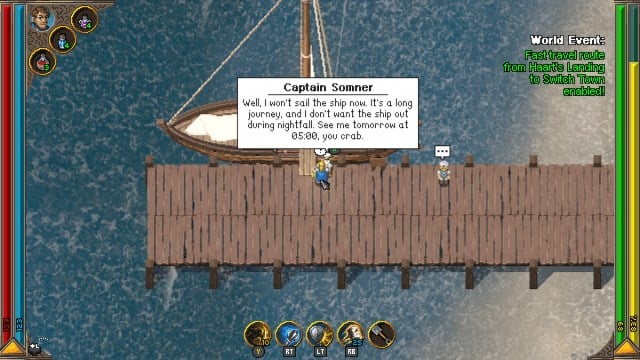
I’ll Hammer-watch out for the future
I got this far and barely talked about what it’s like to actually dungeon crawl in Hammerwatch 2. That’s how deeply buried the core gameplay is. And it’s absolutely baffling that’s the case, because I did have some real fun here when I was in that classic loop of using my skills and my wits to dispatch hoards of monsters and collect the loot they drop.
Yet even this once reliable gameplay cycle began to feel like a slog. The tanky, aggressive enemies often made me feel like the game expected me to both have friends with me and optimized gear crafted via its clunky menus at all times. I actually had to start my original file as a Paladin over so I could switch to the ranged, offense-oriented Wizard on Easy Mode. Not because the game was hard, but because it became such a drag to make progress that that was the only way I could maintain any semblance of a decent pace. I would still like to see how Hammerwatch 2 fares in its intended multiplayer environment, but I absolutely can not recommend playing solo. For comparison’s sake, I could play Heroes of Hammerwatch solo for hours.
Honestly, I’m at the 2000-word mark, and I could easily go on listing grievances. I didn’t even touch on the main story often devolving into fetch quests, or the way the game would hitch whenever it auto-saved on my Steam Deck. Yet in spite of it all, I still do have hope for Hammerwatch 2. As mentioned at the top, Crackedshell has a good track record of providing post-launch support. With some heavy lifting, I could see Hammerwatch 2 becoming a special multiplayer experience. Maybe let players choose to toggle off the archaic time system, rethink the controller support, and streamline all the menus. That alone would strengthen the game. An open-world Hammerwatch sounds fun, it just needs to be a world that I’d actually want to introduce friends to.
In its current state, Hammerwatch 2 feels like a game that constantly asks if it could, but never if it should. A lot of effort is on display here, but that talent was put into so many weird, backward ideas that I could only recommend it to very specific audiences. I would love to return to this game in the future if it got a hefty dose of quality-of-life features that it desperately needs. But for now, I can only point anyone interested toward Hammerwatch or Heroes of Hammerwatch instead.

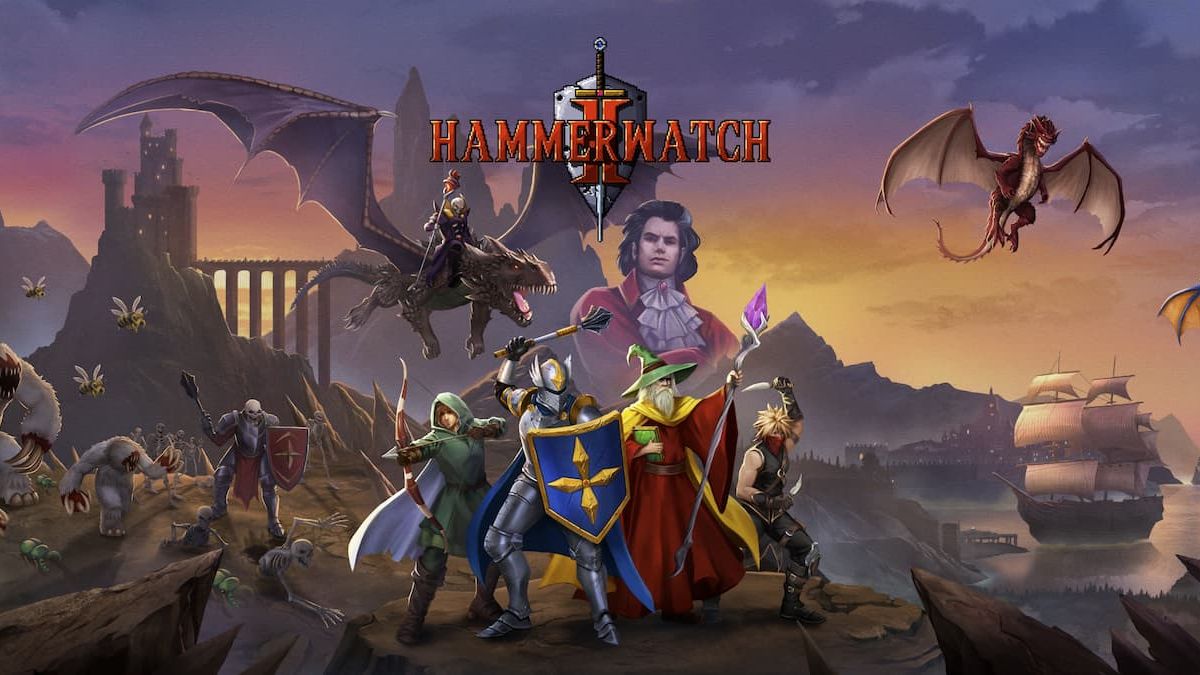

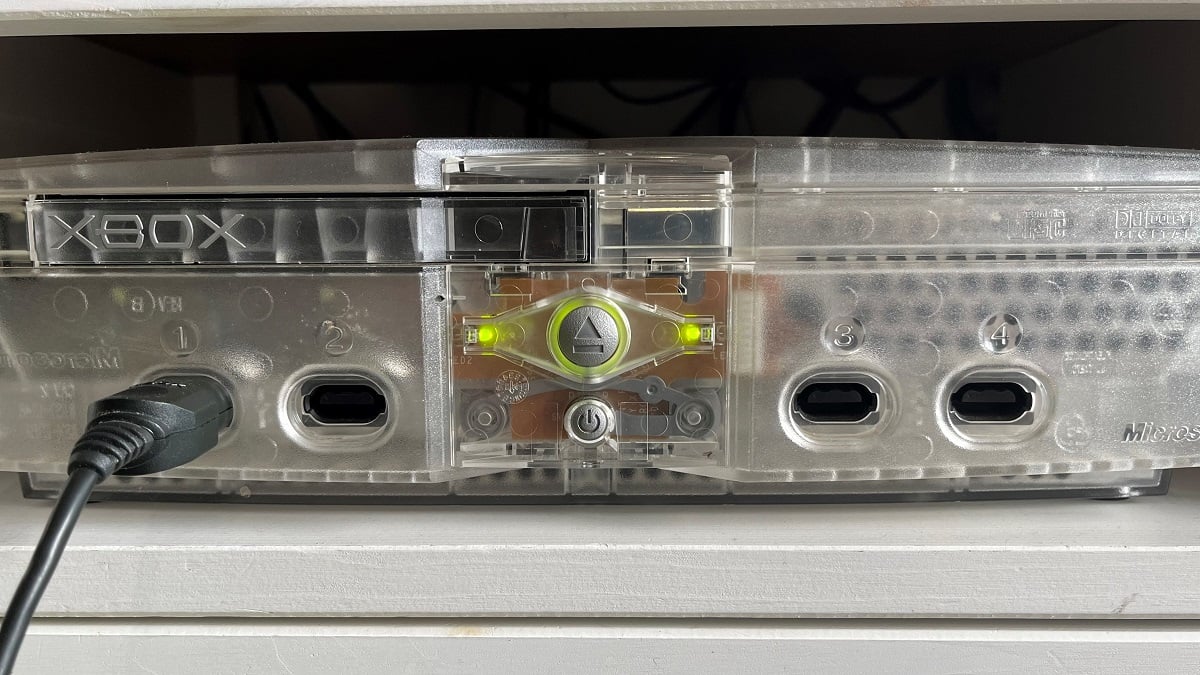

Published: Aug 15, 2023 08:59 am